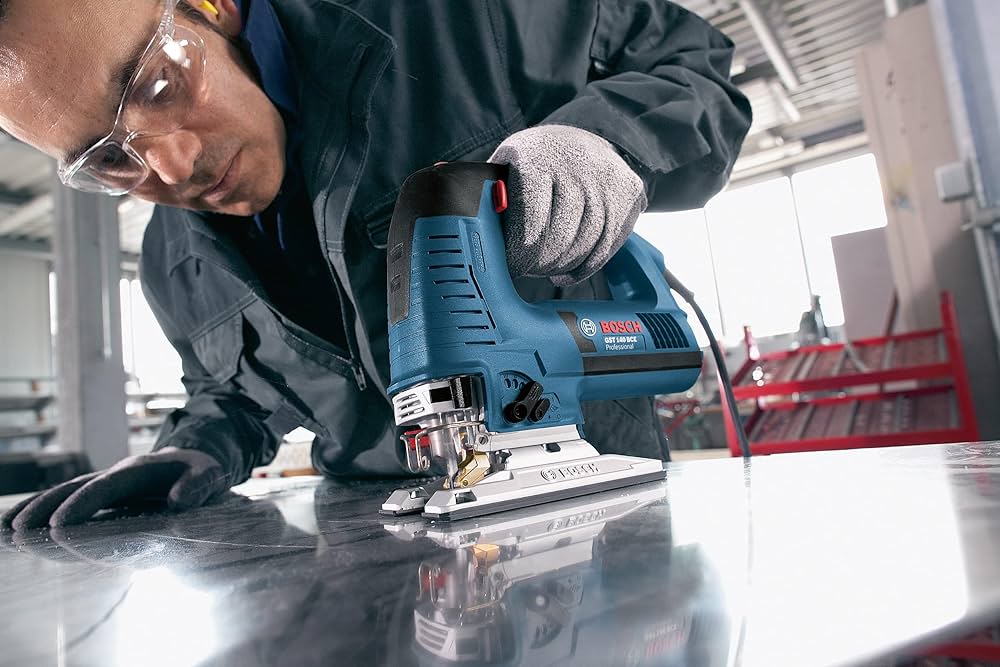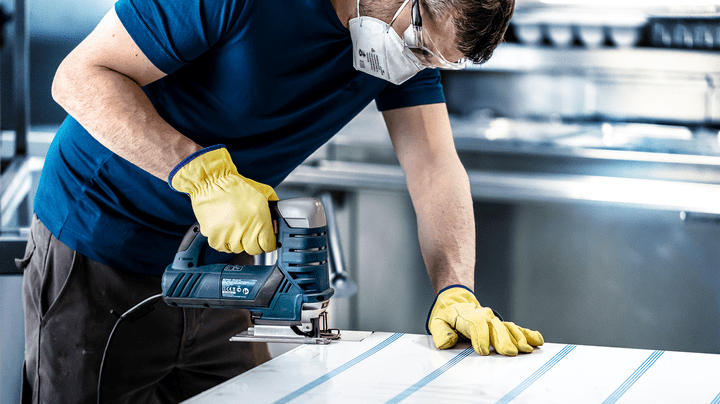Cutting Metal with a Jigsaw to Unlock Versatility
A jigsaw is a multipurpose power tool that is frequently related to woodworking and can be used to cut through a variety of materials. Nevertheless, a jigsaw may also be a great tool for cutting through metal if you use the correct blade and technique. Understanding how to use a jigsaw properly can open up new options, whether you’re working on a DIY project or taking on metal fabrication duties. We’ll examine the advantages and methods of cutting through metal with a jigsaw in this post.
- Jigsaws are versatile tools that may be used for a variety of metal-cutting tasks since they can make complicated and curved cuts. A jigsaw gives you the ability to make accurate and tailored cuts, whether you need to cut curves, notches, or straight lines.
- Accessibility: Jigsaws can be found easily in most hardware stores and are typically less expensive than specialist metal-cutting equipment. If you already have a jigsaw for woodworking, you may use it to cut metal in addition to wood.
- Jigsaws are comparatively simple to use, making them appropriate for DIY enthusiasts and beginners. They give consumers greater control over the cutting process through a comfortable grip, a range of speed settings, and simple controls.
 Techniques for Using a Jigsaw to Cut Through Metal:
Techniques for Using a Jigsaw to Cut Through Metal:
- Choose the Correct Blade: Using a jigsaw to successfully cut through metal requires selecting the proper blade. Choose a premium bi-metal blade made with metal cutting in mind. These blades contain teeth that have been toughened so they can endure the strain of cutting metal and deliver clean, accurate cuts.
- Ensure that the metal component is tightly clamped or kept in place using a vise or other suitable clamping mechanism before cutting. This will stop the metal from moving or vibrating while being cut, resulting in more precise cuts.
- Start Slowly: Start cutting slowly to give the blade time to carve out a smooth, precise path. As you get more comfortable and the blade develops momentum, gradually raise the speed.
- Use the right technique by keeping your hand stable and moving the jigsaw along the path you want to cut. Allow the blade to do the work by applying mild, constant pressure. Allow the saw’s teeth to conduct the cutting and refrain from using excessive force, which could bind or damage the blade.
- Applying a cutting lubricant or utilizing a coolant can assist reduce friction and heat buildup when working with thicker or harder metals. This lubrication can increase cutting effectiveness and extend the life of the blade.
- Safety Advice: Always put on the proper protective clothing, such as gloves, safety glasses, and earplugs. Make sure you have a safe working area and take the appropriate steps to prevent harm when cutting metal because sparks and metal shavings might fly.
Jigsaws can be a useful addition to your toolkit because they are convenient and versatile for cutting metal. A jigsaw can produce clean, accurate cuts in a variety of metal materials with the correct blade, skill, and safety precautions. Learning how to utilize a jigsaw for metal cutting successfully offers up a world of possibilities for professionals and hobbyists alike, from DIY crafts to metal fabrication.



Comments
Add comment